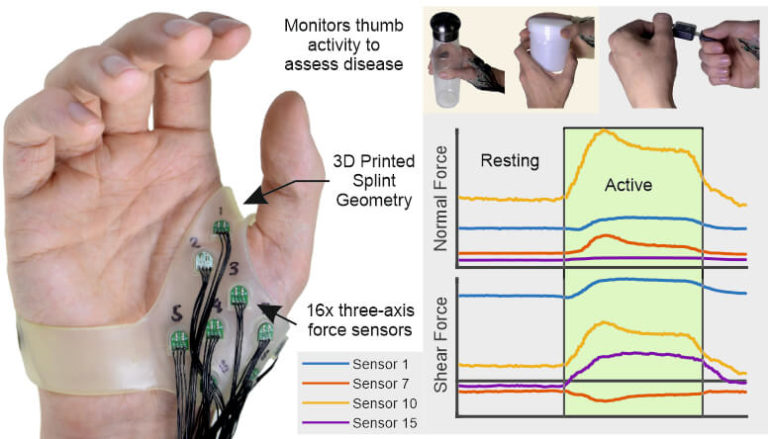As a consequence of the ageing population, cases of arthritis are rising. First carpometacarpal (CMC1) arthritis is a degenerative joint disease presenting with pain at the base of the thumb. Hand splints are typically prescribed to offload the joint and prevent pain. In this work, we aim to produce a sensorised thumb splint to enable the exploration of splint-hand interaction loads to assess disease progression and splint effectiveness.
Sixteen multi-axial soft load-sensing nodes were mounted on the splint-skin interface of a custom 3D printed thumb splint. The splint was used to measure the interface forces between splint and hand in twelve healthy participants in six everyday tasks. Forces were compared between a baseline relaxed hand position and during states of active use. These data were used to generate a measure of sensor activity across the splint surface.
Through direct comparison with a commercial splint, the 3D printed splint was deemed to provide similar levels of support. Observation of the activity across the sixteen sensors showed that ‘active’ areas of the splint surface varied between tasks but were commonly focused at the base of the thumb. Our findings show promise in the ability to detect the changing forces imparted on the hand by the splint surface, objectively characterising their behaviour. This opens the opportunity for future study into the biomechanical effects of splints and orthotics on arthritic thumbs, and other diseased areas, to improve these interventions and improve the quality of life for patients.

